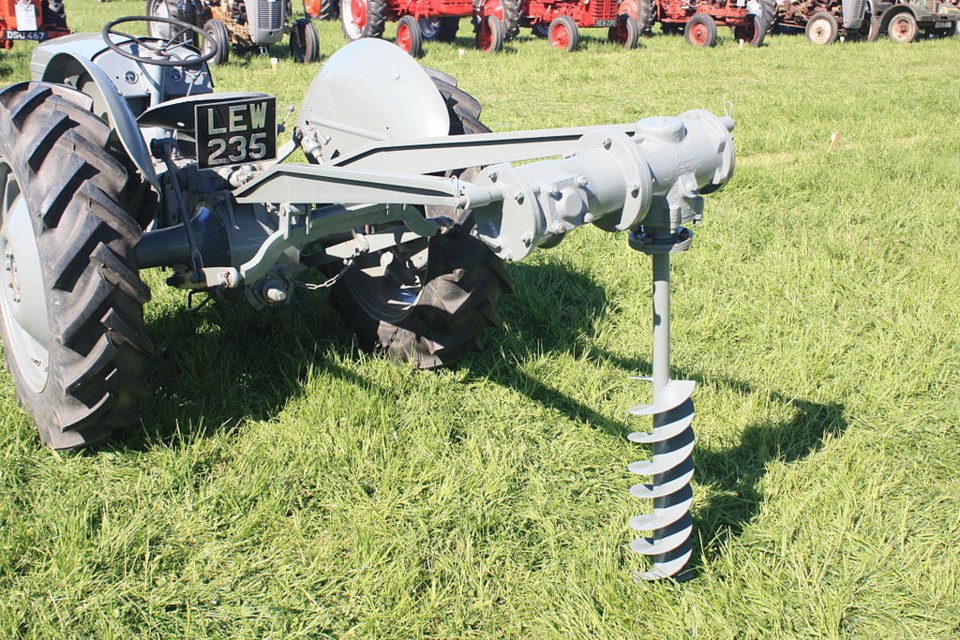Considering Saskatchewan has one of the highest incident rates in the country, it’s no wonder that the province’s health and safety division is still pushing workplace safety. Last week was proclaimed as Agricultural Safety Week to place special emphasis on farm safety.
“Farming is one of the highest hazardous industries in Saskatchewan. We have many fatalities and injuries every year and that’s why it’s important to focus on farm safety,” said Kim Meyer, manager of Safety Operations South. “We want to encourage everyone to work safely on the farm so they can go home to their families at night.”
As most people in Saskatchewan will know, farms have many large pieces of equipment that can be hazardous if a person isn’t cautious around them. On a cattle farm, there’s also livestock to be careful of as well. It’s not just the farmers that have to be wary either, there’s also the public to consider, be it a farmer’s family member or a visiting neighbour or anyone else.
Meyer says it’s important that those people know where it’s safe to go and where it isn’t because while a farmer may know, someone else might not be aware of all the dangers.
“We really don’t understand (the hazards). I think we’re a people that gets things done and we just have to start getting it done safely,” said Meyer. “Everyone wants to go home at night and continue farming in the future, so take those few extra steps to work safely and be able to go home your families at night.”
Locally, Safe Communities Humboldt & Area has been attempting to educate people on this same information through their Progressive Agricultural Safety day, which is held in the fall. Although the day’s activities are targeted at elementary school children, the message remains the same: work safely on the farm.
“Don’t take your kids for rides on equipment, especially if it has an open cab,” said Tracey Shewciw, executive director and program coordinator for Safe Communities. “If you’re not working with the equipment, you shouldn’t be around it … wear safety equipment when around equipment.”
These all seems like basic pieces of advice, but too often people take their safety for granted, thinking it won’t happen to them. Other times, people are in such a rush to get something done that they don’t want to take those few extra minutes to do it safely.
“I guess it’s just that comfort zone. People get comfortable thinking it won’t happen to them and they’re in so much of a hurry to get things done that they don’t think of turning off a piece of equipment when they think it’s just a quick fix or something,” said Shewciw. “That false sense of security comes from that comfort zone and being too comfortable with equipment and forgetting how dangerous that equipment is that they’re working on or with.”
Shewciw thinks that a part of this reasoning can be attributed to the nature of the farm industry. Unlike all other industries where people have to leave their house to go to work, this occupation happens right there on the homestead. As a result, parents, spouses, children, etc. are living where they’re working and thus are underfoot much of the time. This kind of situation breeds a dangerous familiarity with the equipment that lulls people into that false sense of security.
Furthermore, Shewciw says one of the biggest causes of farm injuries is because of augers.
“It’s a very fast spinning rod and people don’t realize how fast it spins,” she said. “If you get a shoelace or a sleeve caught, you’ll be taken into this piece of equipment and ripped apart or killed. It’s very dangerous.”
A fatal incident like that can happen within seconds simply because of carelessness. At best, you lose a limb. At worst, you lose your life.
“Don’t think that just because something hasn’t happened in the past, it’s not going to,” said Shewciw. “Take that extra second and turn the piece of equipment off before making that quick fix or adjustment. It happens so fast. In the blink of an eye, your world can change.”
Fortunately, Meyer said they have been seeing an increase in the number of people asking for information and they’ve been getting more media calls. So they’ve had improvement getting the word out there, now it’s just a waiting game to see if there’s any improvement.
According to the Canadian Centre for Health and Safety in Agriculture (CCHSA), an average of 14 people are killed every year and many more are injured on farms in preventable incidents. The hope is that the next time CCHSA releases more statistics, those numbers will have decreased.
“Awareness is a big part of it, but culture is too, so it’s getting people out there,” said Meyer. “I think more people that are working off the farm are getting that safety education and taking it back to the farms.”
For anyone looking for safety information, he or she is advised to take a look at the Farm Safety Guide, which is an online resource that tells people how to identify and mitigate hazards while also providing information.
“Hopefully, people are starting to get the message,” said Meyer.




